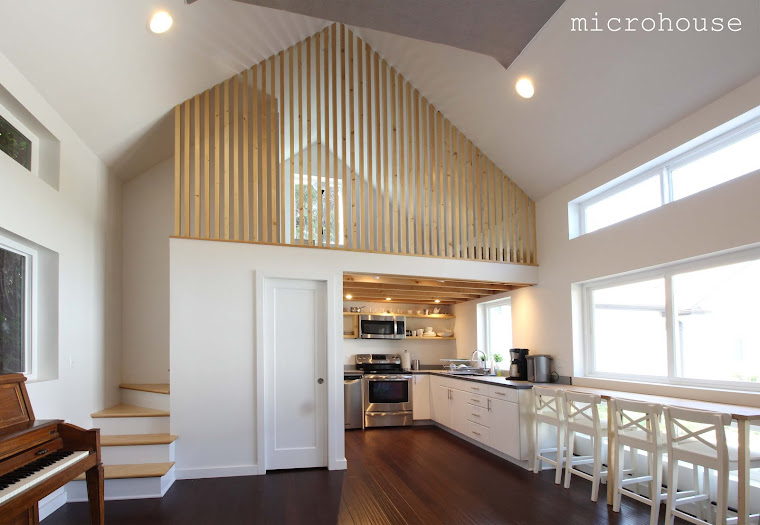1. Family Sized
Seattle’s newly adopted land-use code now allows cottages to be taller and larger – up to 1,000 sq. ft. in size. With this extra space many new cottages are being designed and built with 2 or even 3 bedrooms. Up until now, most cottages were designed for aging parents or as rentals to accommodate an individual or couple. These new larger cottages are often being designed for families with children — such as a 900 sq. ft. cottage we are designing in Ballard for a family of five and a 1,000 sq. ft. cottage for a family of four. In both cases the owners will move into the new cottages with their families and rent out the existing primary residence.
2. Extra Units
The new code now allows a DADU and an ADU. (previously only
one or the other was allowed). Many people who have existing ADUs are exploring the option of adding DADU to their properties. There are limitations with the new rules to keep in mind. Adding a 2nd ADU to an existing single family residence will likely trigger extensive building code driven upgrades, including adding sprinklers to the entire structure. If the new second unit is a DADU the DADU will need to meet green building standards or made affordable to and reserved solely for "income-eligible" households for a period of 50 years.
3. Maximizing the value of your property
With housing prices and rents in Seattle still at all-time highs, many people including building developers are seeking to unleash the potential of their back yards. For example, one developer is planning to add DADUs to their entire portfolio of existing rental properties. This is possible now that owner occupancy is no longer required.
Builders of new residences are also adding DADUs and AADUs. We are currently working on one project where the existing residence is being remodeled and an ADU added. The existing lot is then being divided and a new residence, with an AADU and DADU, is being built on the newly created lot. This development is taking advantage of an over sized lot to create density in a desirable neighborhood while preserving and updating the existing historic home.
4. Going Condo
The use of condominium agreements to sell the primary residence and the DADU separately is probably the biggest trend of 2019 and will only continue. While creating a DADU adds value to a property as a whole, an even higher value can be obtained by selling the primary residence and the DADU separately.
Building a DADU is a significant long term investment. Designing to achieve the maximum potential for the individual lot in light of zoning restrictions and the unique goals of their owners is and will continue to be the best way to achieve the highest value for this investment. Assisting to prioritize goals and achieve potential is in light of code restrictions and construction cost trade-offs is a challenge we enjoy and that we look forward to continuing in 2020.




































